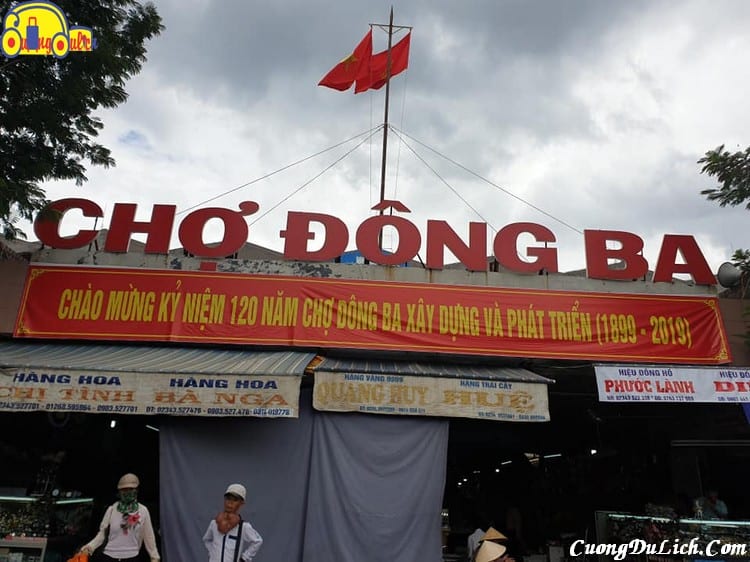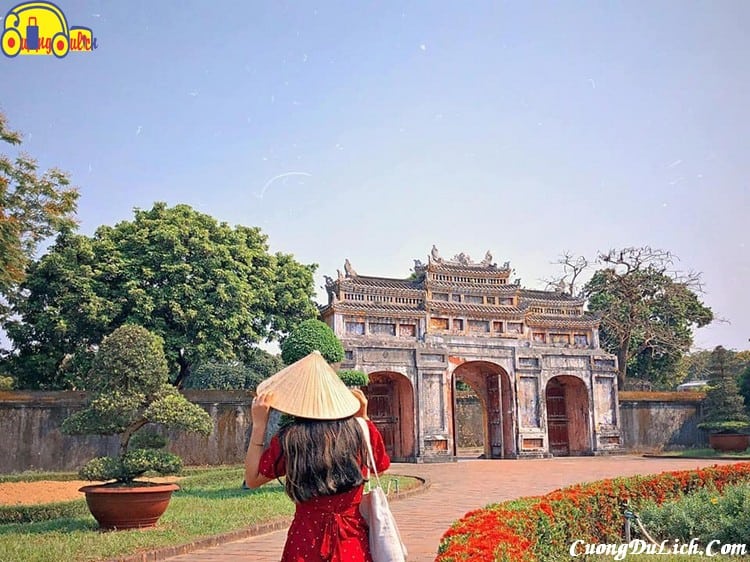Surely you have heard or traveled to Hue and thought that Hue is nothing special. But I think you need to reconsider your perception after reading this article. The article summarizes 23 surprising things about traveling to Hue that you definitely didn’t know.
1. Hue is a City
Many people often say they are traveling to Hue, arriving in Hue, passing through Hue, but the truth is that Hue is the name of a city located in Thua Thien Hue province, not a province itself. This is definitely a mistake made by over 50% of regular tourists.
2. Hue Imperial City is an ancient relic preserved from the past
Hue is a place that preserves the most intact imperial relics in Vietnam, although they have been somewhat damaged by natural disasters and wars. Especially, after the 1947 anti-French resistance campaign and the 1968 Tet Offensive, the imperial capital of Hue lost half of its architecture, with almost all the main palaces in the Forbidden Purple City being destroyed up to 90%. However, compared to other relics, the Hue Imperial City is still relatively well preserved.

3. Hue only has the ancient capital
Many tourists who have not been to Hue still mistakenly believe that Hue only has one preserved attraction, which is the ancient capital. However, in reality, Hue still preserves 7 royal tombs and 9 Nguyen dynasty tombs, among which the Dục Đức tomb is the resting place of 3 kings: Thành Thái, Dục Đức, and Duy Tân.
4. The Imperial City is the number 1 destination in Hue
That’s just a habit of tourists. In fact, besides the Imperial City, the 3 tombs of Minh Mạng, Tự Đức, and Khải Định are the best-preserved heritage sites and also attract the most visitors. The complex of Hue Imperial City relics was removed from the list of heritage sites requiring monitoring and recommendations by UNESCO in 2013.
5. Hue has 5 cultural heritages
Hue or Thua Thien Hue province is the only province in Vietnam with 5 UNESCO-recognized cultural heritages: including the Complex of Hue Monuments (1993), Royal Court Music of Hue (2003), Woodblocks of the Nguyen Dynasty (2009), Chau Ban of the Nguyen Dynasty (2014), and Poetry on Hue Royal Architecture (2016). This is a special feature that not many places have.
6. Every year, Hue has a Festival
Hue is famous for 2 alternating festivals: the Hue Festival in even years and the Traditional Craft Festival in odd years. Among them, the Hue Festival, which has been held since 2000, is the largest contemporary festival in Vietnam and has also inspired many other festivals across the country.
7. Hue is divided into 2 distinct areas
The overall city of Hue is divided into two distinct parts: the South Bank and the North Bank, separated by the Perfume River. While the South Bank is where modern and bustling structures are located, the North Bank houses the entire Hue Imperial City and many ancient relics, making it quiet and ancient.
8. Everything is lower than 17m
All structures within the Hue Imperial City, such as houses, schools, etc., are limited in height and must be lower than the height of the Hien Lam Pavilion in the Imperial City (17m).
9. The first Type I urban area in Vietnam
This is the first Type I urban area without a provincial city in Vietnam, recognized on August 24, 2005.
10. Hue is small but crowded
Although the area of Hue city is small (72 km2), it has a population of 455,230 people with 27 wards, quite densely populated.
11. Hue is the Buddhist capital
In Hue, stepping out onto the street, you will find temples everywhere. This place is known as the Buddhist capital of Vietnam, with over 300 temples and Buddhist monasteries of all sizes. Therefore, every Buddha’s Birthday season, the streets of Hue are decorated splendidly with the most magnificent processions.

12. Huế is the place with the most delicious dishes
At a culinary conference about Huế, it was estimated that out of 1700 Vietnamese dishes, the ancient capital of Huế accounts for up to 1300 dishes, including 3 main types: royal cuisine, folk cuisine, and vegetarian cuisine. Especially, the food here is not only delicious but also very cheap and quite spicy (on average, clams rice 7k, beef noodle soup 25k, Huế cake 10k per plate, sweet soup 10k per cup,…)
13. It’s Trường Tiền Bridge, not Tràng Tiền Bridge
The most famous bridge in Huế is officially named Trường Tiền Bridge, not Tràng Tiền as many people mention, because the bridge used to be near a money casting workshop.
14. Trường Tiền Bridge has collapsed several times
Trường Tiền Bridge was designed by Gustave Eiffel – the architect of the Eiffel Tower, the symbol of Paris. Throughout its over 120 years of existence, the bridge has been renamed 5 times and collapsed 3 times due to wars and natural disasters.
15. The oldest market in Vietnam
Đông Ba Market is one of the most famous and oldest markets in the country with a history of 120 years. This place not only sells Huế’s specialties at 3 times the normal price but also gives tourists the opportunity to admire the common life of Huế through scenes of old ladies arguing in Huế accent, the smell of Huế through shrimp paste and fermented shrimp paste stalls,… and occasionally there are robberies.
16. Cyclo is number 1
Cyclo is the most popular means of transportation in Huế with an estimated over 5000 vehicles, very favored by tourists. If you avoid factors like going the wrong way or overcharging, in general, Huế cyclos are friendly and worth experiencing.
17. The first green city
Huế is the first national green city of Vietnam voted by the World Nature Conservation Fund, with over 67,000 street trees. Many streets have become legendary along with the trees planted on them, such as the Phoenix tree-lined street in the song of the late musician Trịnh Công Sơn.
18. Huế’s drizzling rain
Aside from the conical hat, áo dài, Huế’s drizzling rain is also a famous brand of the ancient capital. The rain is not heavy or pouring but gentle, lasting from one month to another, sometimes not stopping for 43 days (2007). Combined with the cold air from the North, winter in Huế is cold, freezing even though the temperature is not as low as in Hanoi. The melancholic rain scenery of Huế has long been mentioned in poetry and literature.
19. Huế accent is not what you think
The Huế accent has long been seen as the most unique feature of Huế people with very old, ancient words and a deep tone. People from Huế often read the final sound n, t as ng, c; oi as oai (muôn màu = muông màu, coi mắt = coai mắc), ong as oong (con voi = coong voai),… and many more. However, it should be noted that the Huế accent does not always add a heavy tone to every word as many people mistakenly think.
20. There are many strange words
“Mô, tê, răng, rứa” are the 4 most common words in daily life in Huế, meaning “where, there, why, what”.

21. Talented women and handsome men
It is said that the women of Hue are beautiful, gentle, and virtuous (nowadays quite rare), while the men of Hue are often described as dreamers and deceivers with quite an ego.
22. Elegant Hue people
Hue people are famous for their aristocratic demeanor. “Mệ” is an ancient term used to refer to royalty in the past, those of noble lineage would use “mệ” when speaking to prove their noble descent. The “mệ” personality shows a behavior that is both haughty and tolerant, willing to bestow favors upon others, even if they may be wealthier than the “mệ” person.
23. Only love Hue beef noodle soup
Most students from Hue studying at the Economics University do not like “Mì Quảng” in the first 3 months. Their hearts always lean towards the divine Hue beef noodle soup and the legendary baby clam rice.
